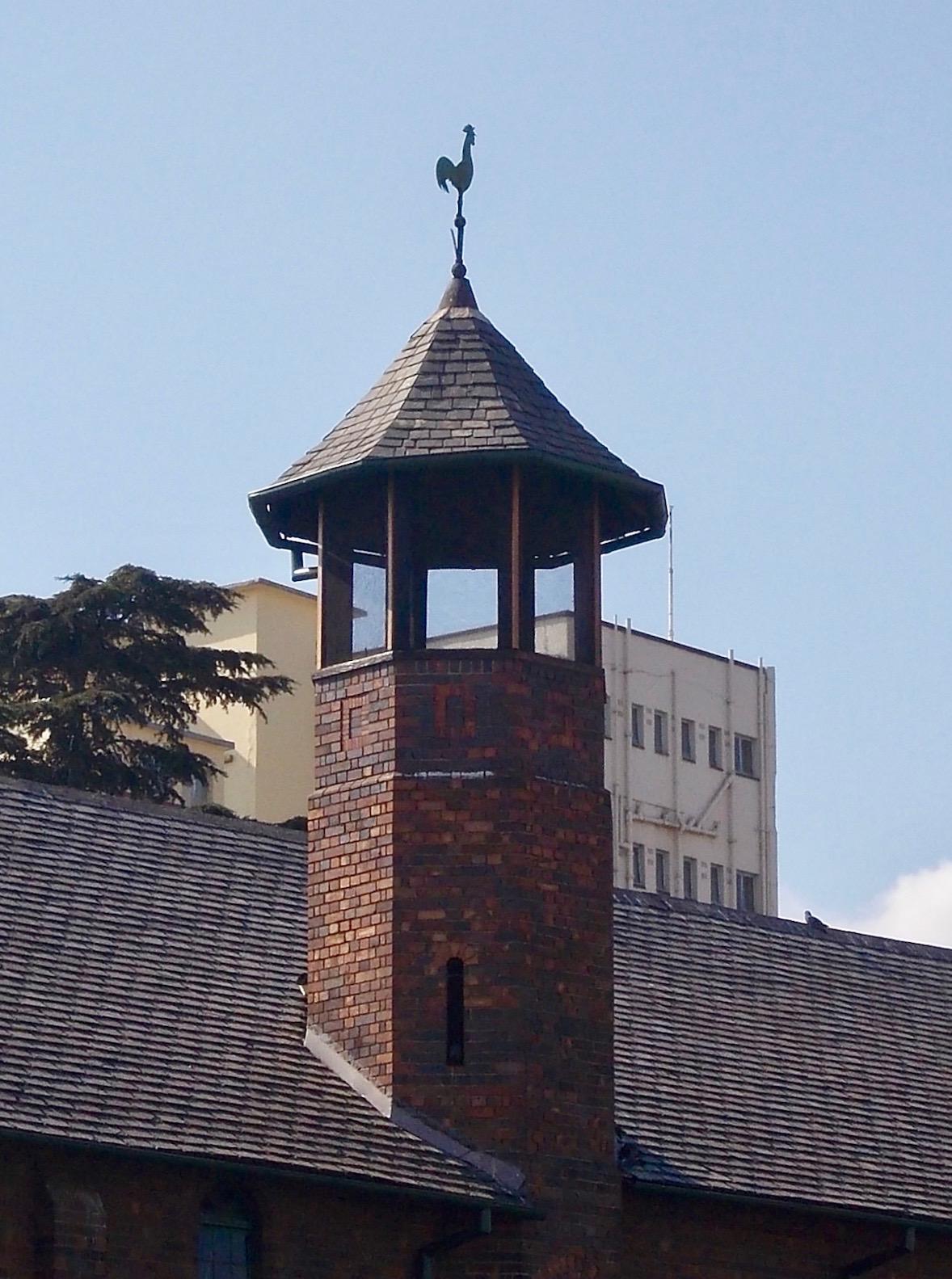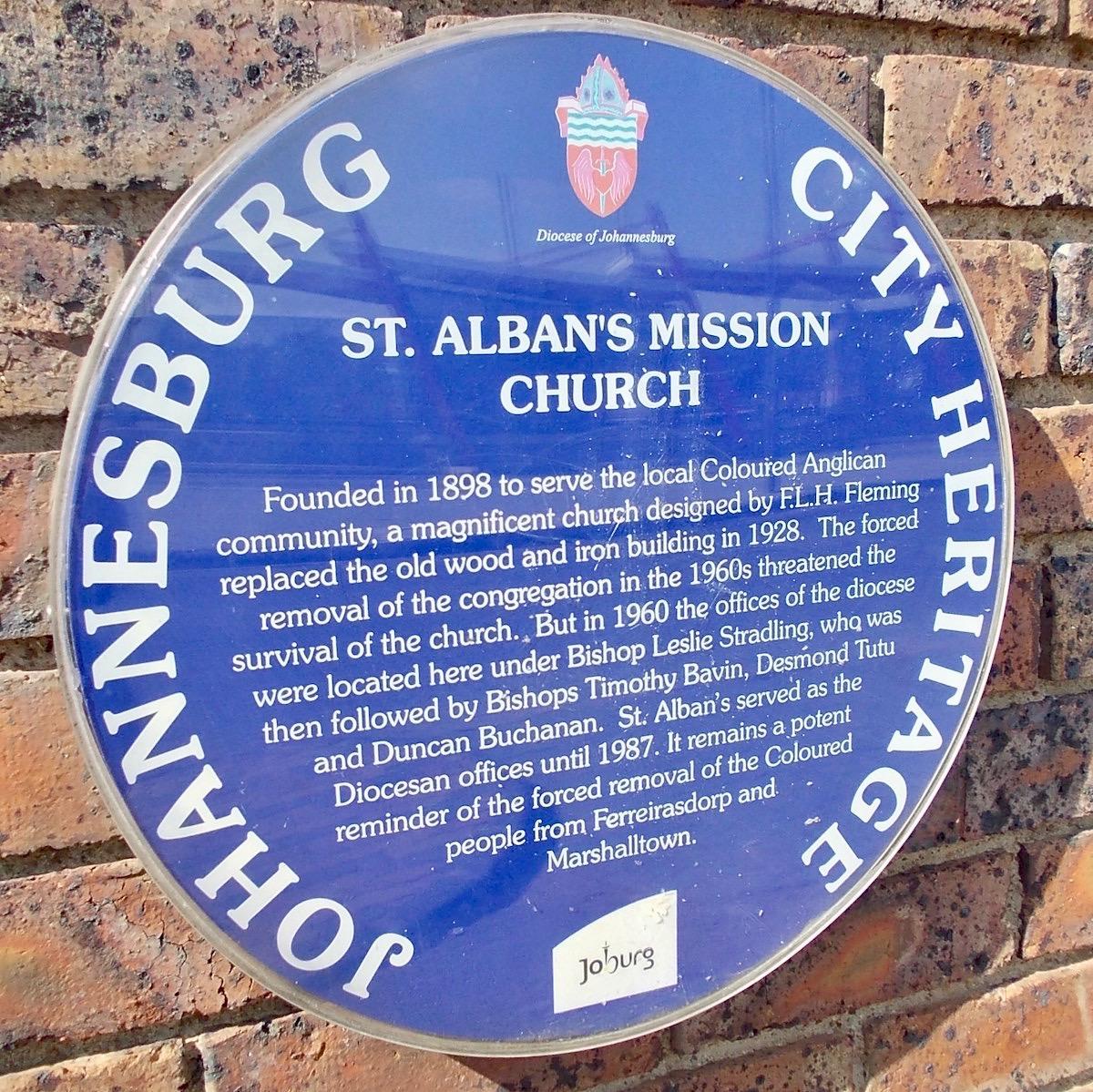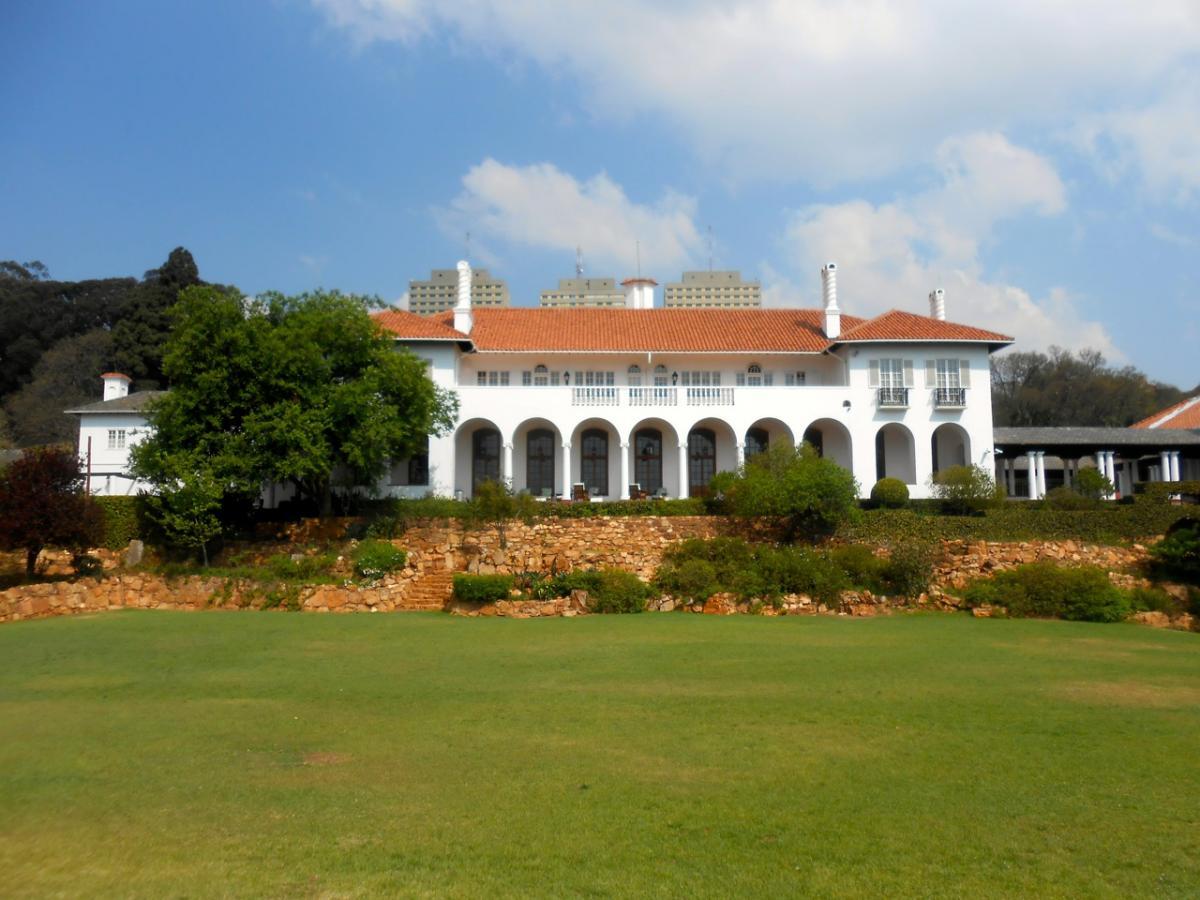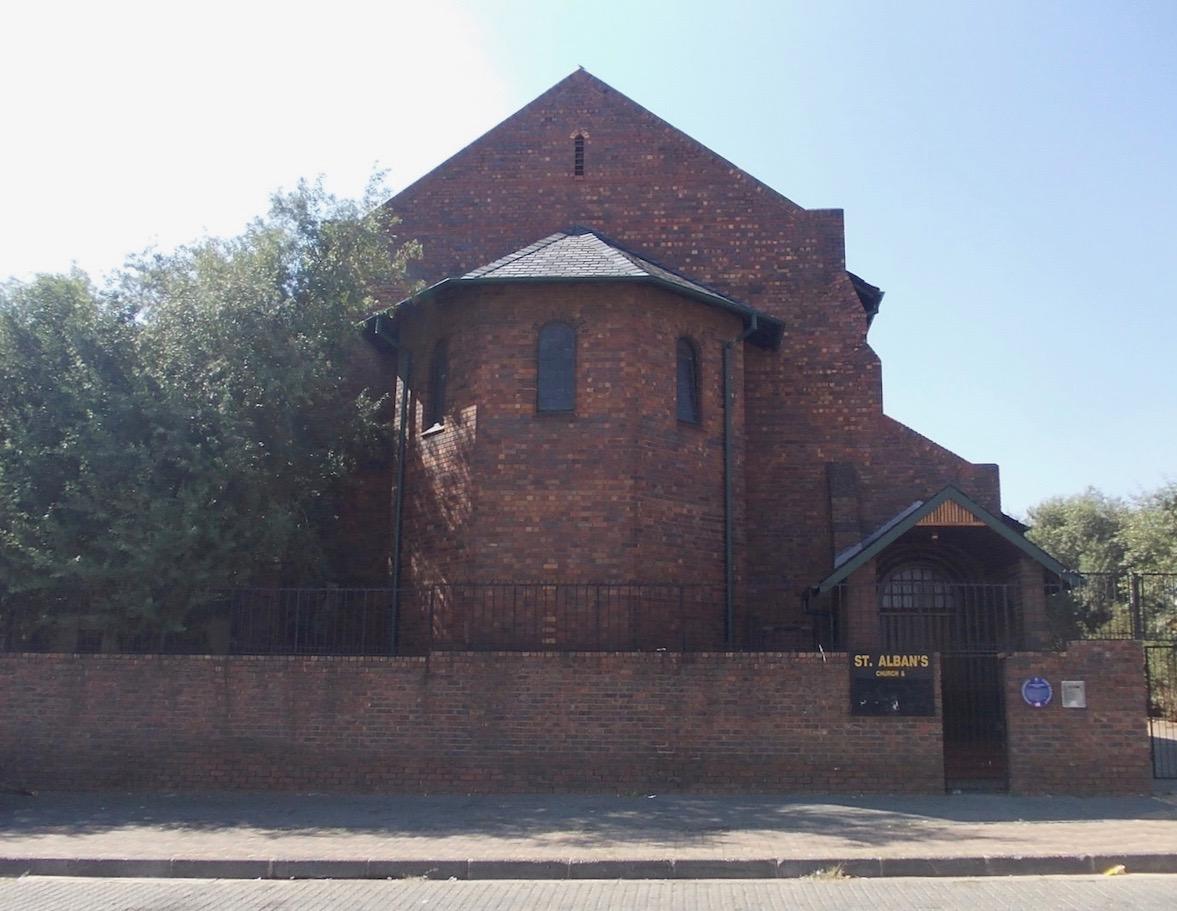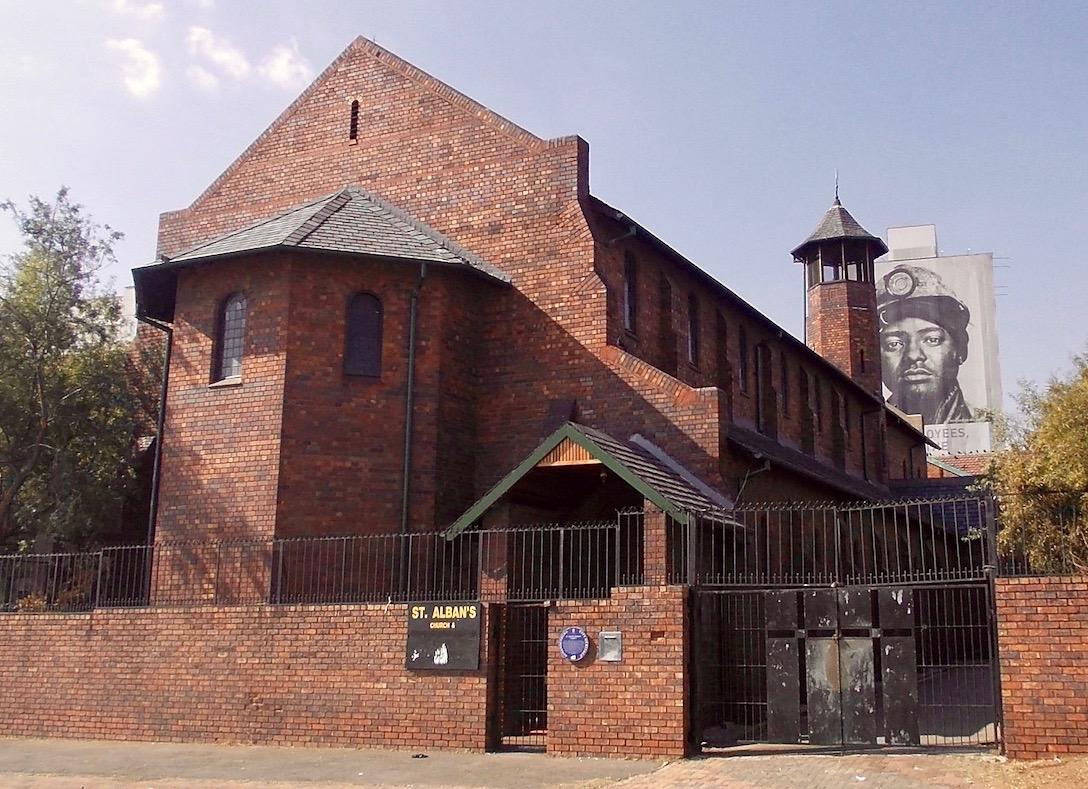
Disclaimer: Any views expressed by individuals and organisations are their own and do not in any way represent the views of The Heritage Portal. If you find any mistakes or historical inaccuracies, please contact the editor.
In the article below, journalist Lucille Davie unpacks the history of St Alban's Church in Ferreirastown and describes its restoration in 2012. The article was originally published on the City of Joburg's website on 19 February 2012. Click here to view more of Davie's work.
The pigeon droppings in the St Alban’s Anglican Church turret were so thick and toxic that, when conducting restoration work on the church, the building foreman was forced to go home, see his doctor and take a day off.
The droppings have accumulated over years, posing a serious health risk because they dry out and the dust becomes airborne, carrying diseases like salmonella, meningitis, and lung infections. Once scaffolding was in place, the droppings were manually removed.
Over the past year the 84-year-old church has undergone restoration, principally to repair its waterproofing by replacing roof tiles, gutters and downpipes, and pigeon-proofing the turret, of course.
Parktown & Westcliff Heritage Trust (now the Johannesburg Heritage Foundation) chairperson Flo Bird has been the driver of the restoration work. The major problem, she says, was the leaking roof and gutters, allowing rain to damage interior woodwork and cause damp in the walls.
Bird managed to raise funding through the Mackenzie Family Trust and the Oppenheimer family.
“The water-proofing has been completed. This was the most expensive part involving replacing the box gutter, repairing all flashings, fixing some of the roof slates, installing and painting new gutters and downpipes, adjusting the run-off channel and making good where the water had damaged part of the interior woodwork,” she says.
The turret has been cleared of droppings and squares of metal mesh have been inserted around the four open areas of the turret, preventing pigeons from entering the tower.
The late Ernest Oppenheimer used to visit the church almost daily after his wife died in 1934, and his son a year later. He converted to Christianity from Judaism, and although his parish church on Sundays was St George’s in Parktown, says Bird, he worked in the nearby 44 Main Street, so St Alban’s was convenient.
St Alban's Church Tower (The Heritage Portal)
Built in 1928
The church in Ferreirasdorp, built in 1928 for the coloured community in Joburg, exudes a quietness and tranquillity, in contrast to the busy streets, and buses roaring past outside. Seating around 80 people, the site was designated for the coloured Anglican community in 1898 and a wood and iron church was built. This was replaced with the present solid red-brick structure 30 years later, and it still stands tall over 80 years later.
The finely laid red brick on the exterior continues into the church, perfectly offsetting the wooden floors and tall, wood-lined ceiling, with its attractive wooden beams.
The north side of the church is filled with tall, arched steel windows with rare frosted glass.
The beautiful teak altar has been restored to its place in the nave. It is overlooked by a tall bridge structure, dominated by a suspended carved, full-size Christ on the cross, with Mary and Joseph on either side, looking imploringly at him.
The walls are bare of ornamentation, allowing the simple beauty of the interior to shine.
Blue plaque (The Heritage Portal)
Donation
Recently, says Father John Ntsoko, who has conducted Sunday services at the church since 2005, a donation of wooden pews was made to the church. He says the previous pews were given to St Mary’s Cathedral in the CBD.
Bird organised the donation from Villa Arcadia, the mansion built for Randlord Lionel Phillips and his wife, Florence. The villa has been a Jewish orphanage for 81 years but was bought by Hollard Insurance almost eight years ago and converted into offices. The benches, with carved graffiti done by decades of naughty children, were removed from the small shul at Arcadia.
Villa Arcadia (The Heritage Portal)
Ntsoko says the congregation of around 80 people consists mainly of domestic workers, some from the CBD but others from Midrand, Alberton and Soweto.
In 1958 the Anglican diocese was stationed here, under bishops Desmond Tutu and Duncan Buchanan. The church was “the socialite church”, says Bird, the place where you had to get married.
This side of town was traditionally where the coloured community lived. The same year as the church was opened a Coloured Girls’ Hostel was opened in Ferreirasdorp, according to Naomi and Reuben Musiker in A concise historical dictionary of Greater Johannesburg. The hostel still exists, as well as a nearby Methodist church.
In the 1960s the community was moved by the apartheid government, and the land has remained vacant for decades. Recently the Westgate BRT station was opened across the road. Development, including residential, retail and office space, is planned for the future.
When asked why she got involved in the restoration of a church she doesn’t attend, Bird says simply: “Because it’s such a beautiful church.”
A beautiful church (The Heritage Portal)
Ferreirasdorp
The name Ferreirasdorp, the town’s first mining camp, goes back to the first months of the establishment of the town Johannesburg.
Colonel Ignatius Ferreira – he received the military title in the campaigns against Sekukuni in the 1870s, and battles in Zululand – was born in Grahamstown in 1840. He was a Boer and an unsuccessful prospector on the diamond fields in Kimberley, according to Eric Rosenthal in Gold! Gold! Gold!
After the Zulu war Ferreira had been prospecting in the Transvaal, and he pitched his tent where Ferreirasdorp is today. “Since most of the new arrivals were younger than he and lacking in experience, they tacitly accepted his leadership by referring to the settlement as ‘Ferreira’s Camp’,” writes Rosenthal.
Dr Hans Sauer was the district surgeon in Johannesburg in the early days. He is quoted by Rosenthal, describing Ferreira’s Camp: “Within a fortnight after our arrival,” said Sauer, “Ferreira’s Camp began to assume the aspect of a busy place; tents and tented wagons covered a wide area, and here and there primitive reed-and-clay shanties appeared. Newcomers turned up every day, by ox wagon, by horse wagon, by mule wagon, and by every imaginable sort of vehicle, from the Old Colony, from Natal, from the Orange Free State, from Kimberley, from Pretoria, in fact, from all parts of South Africa.”
Sauer continues: “This rush continued without interruption for years. As there was practically no accommodation in Ferreira’s Camp, everyone had to manage in the open as best he could. All this happened in the beginning of the winter of 1886.”
Gold was discovered in September 1886, and the gold fields declared by president Paul Kruger in October. Ferreira went on to float his own mine.
His wagon is believed to have stood a block away from the church, where the present bus station stands. Plans are afoot to position a replica wagon in the same place.
Lucille Davie has for many years written about Jozi people and places, as well as the city's history and heritage. Take a look at lucilledavie.co.za
Comments will load below. If for any reason none appear click here for some troubleshooting tips. If you would like to post a comment and need instructions click here.

